Accepted Scientific Name: Echinopsis chamaecereus cv. Perla di Verona
Chamaelobivia hybid
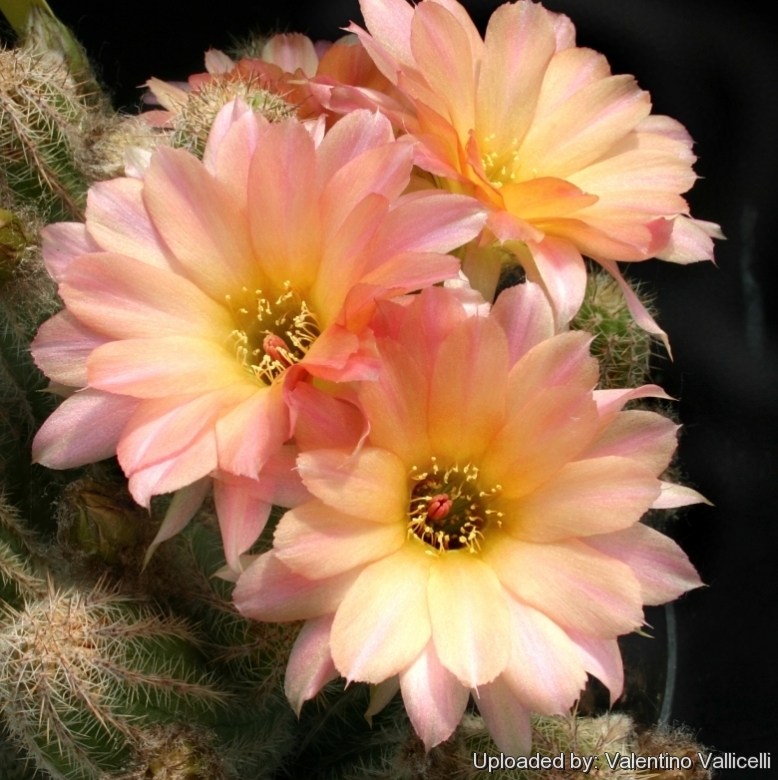
Chamaecereus cv. Perla di Verona (Echinopsis chamaecereus cv. Perla di Verona) Photo by: Valentino Vallicelli
Origin and Habitat: Garden origin (Nursery produced cultivar)
Synonyms:
Description: The Chamaelobivia hybrids. Chamaecereus silvestriiSN|8694]]SN|8694]] (now renamed Echinopsis chamaecereus) is an old species widely hybridized with various Lobivias, hence Chamaelobivia (intergenic hybrid of Chamaecereus and Lobivia), but since both of those are now reclassified as Echinopsis, that makes this an Echinopsis hybrid.
Chamaelobivia are very popular hybrids that develop really amazing flowers of different colours on the original "peanut" body and many of these hybrids have cultivar names. This plants soon form spectacular clumps with 20-30 (or more) flowers at a time, and are quite a sight. They are often thicker, stronger, larger-growing than C. sylvestrii, and tend not to have the typical peanut shaped offsets. The offsets produced are more strongly attached to the main stems.
Most of these hybrids can grow outside all year and can take a lot of sun. Hardy from -4° to -12° C, depending on clone.
Subspecies, varieties, forms and cultivars of plants belonging to the Echinopsis hybrid (Chamaelobivia) group
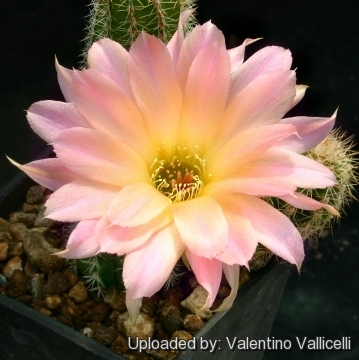 Chamaecereus cv. Perla di Verona (Echinopsis chamaecereus cv. Perla di Verona) Photo by: Valentino Vallicelli
Chamaecereus cv. Perla di Verona (Echinopsis chamaecereus cv. Perla di Verona) Photo by: Valentino Vallicelli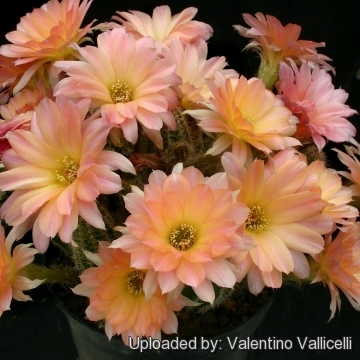 Chamaecereus cv. Perla di Verona (Echinopsis chamaecereus cv. Perla di Verona) Photo by: Valentino Vallicelli
Chamaecereus cv. Perla di Verona (Echinopsis chamaecereus cv. Perla di Verona) Photo by: Valentino Vallicelli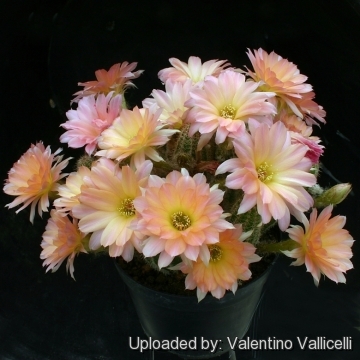 Chamaecereus cv. Perla di Verona (Echinopsis chamaecereus cv. Perla di Verona) Photo by: Valentino Vallicelli
Chamaecereus cv. Perla di Verona (Echinopsis chamaecereus cv. Perla di Verona) Photo by: Valentino Vallicelli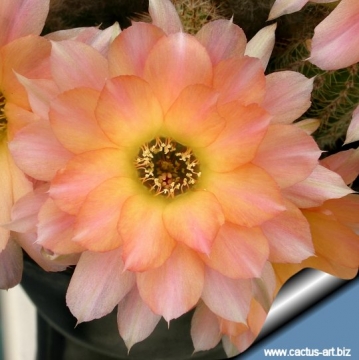 Chamaecereus cv. Perla di Verona (Echinopsis chamaecereus cv. Perla di Verona) Photo by: Cactus Art
Chamaecereus cv. Perla di Verona (Echinopsis chamaecereus cv. Perla di Verona) Photo by: Cactus Art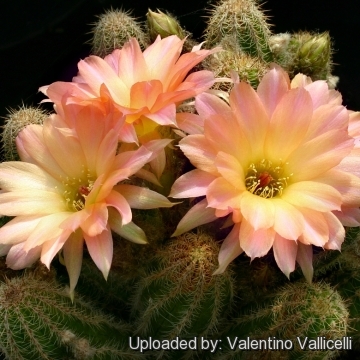 Chamaecereus cv. Perla di Verona (Echinopsis chamaecereus cv. Perla di Verona) Photo by: Valentino Vallicelli
Chamaecereus cv. Perla di Verona (Echinopsis chamaecereus cv. Perla di Verona) Photo by: Valentino Vallicelli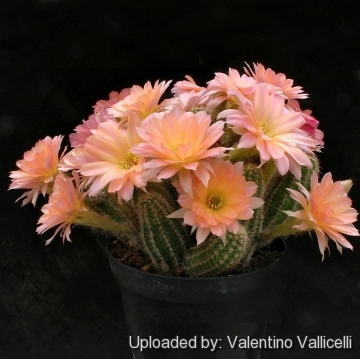 Chamaecereus cv. Perla di Verona (Echinopsis chamaecereus cv. Perla di Verona) Photo by: Valentino Vallicelli
Chamaecereus cv. Perla di Verona (Echinopsis chamaecereus cv. Perla di Verona) Photo by: Valentino VallicelliCultivation and Propagation: This is an easily grown cactus, suited to hanging baskets as well as pots. Grow in well-drained soil in a sunny spot. This Echinopsis needs a period of cool rest in winter to produce flowers abundantly. It flowers freely indoors if conditions suit it. The plant survives outside without protection in winter (cold hardy to -8° ) but is then somewhat prone to rot, too. It needs moderate water in summer, none in winter. Watch for infestations of mealybug, scale insects and spider mite.
Propagation: Easy to propagate from offsets. Small joints are produced in quantities (peanuts). These offsets can be detached and planted immediately, as they root easily with no assistance when they touch the ground. Just let them lay on the soil and you have a new start.
















